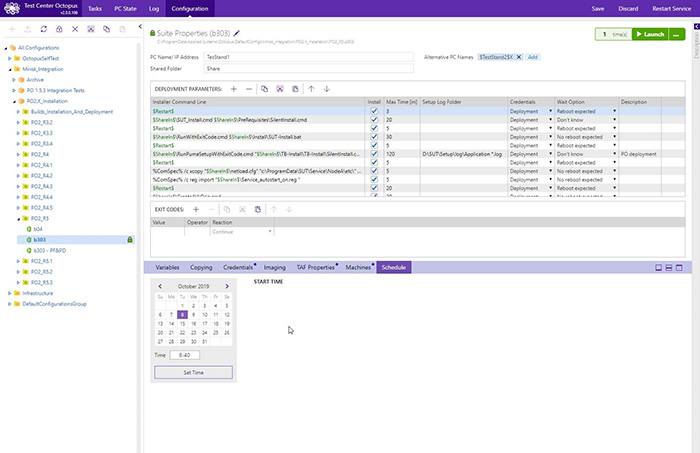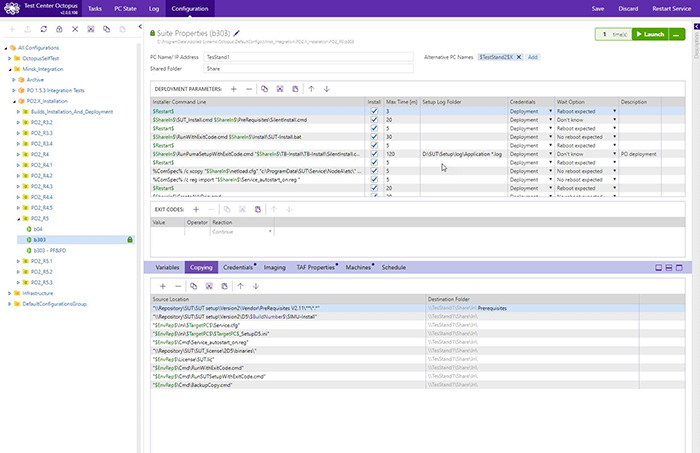Customer
Our Austrian-based client holds a prominent position as a leading manufacturer of sophisticated test and measurement equipment tailored for the automotive industry.
Challenge
With a focus on creating unique software-hardware solutions for major vehicle manufacturers worldwide, the customer's Test Center conducts rigorous quality assurance, overseeing hotfixes, patches, and product releases. Operating approximately 1,500 physical machines united into 500 test systems, the Test Center configures an average of 3 to 4 environments with different product versions on each physical machine. The number of environments on virtual machines exceeds 5,000.
The complexities of software testing present specific challenges:
• Each product version necessitates testing in both standard and client-specific environments.
• Each product has a dedicated test system designed to cater to its unique requirements.
Conducting these laborious tasks manually would require a significant number of software testing specialists and several months for each release. Hence, the customer sought an test automation framework to efficiently configure environments and execute tests. After careful market analysis, the customer's specialists chose Octopus, the automated testing control system developed by Applied Systems, to fulfill their needs.
Solution
In close collaboration with the client, Applied Systems' team meticulously analyzed various test systems. The analysis revealed common issues across the generic components of the systems, leading to the decision to develop a unified testing solution with a standardized environment and reports.
Addressing these requirements, Applied Systems tailored and deployed its Octopus automated testing control system specifically for the customer's products. The solution was designed with an easy-to-understand logic, algorithm, and architecture. Throughout the project, Applied Systems offered extensive support and comprehensive documentation.
Results
The implementation of the test automation framework based on Octopus revolutionized the customer's software testing process, significantly increasing efficiency and productivity. The framework enabled seamless reuse of tests irrespective of their physical location, streamlining synchronization on both the customer and developer sides. This resulted in enhanced product quality, reliability, and performance by executing more tests and configuring multiple environments effortlessly.
The achievements from adopting test automation encompassed:
• Automatic deployment of environments across a pool of machines.
• Execution of a standardized set of tests for each product version release.
• Consolidation of installation steps from different products into a single task, simplifying system preparation.
• Seamless integration with the customer's existing testing tools.
• Easy parameterization facilitated by a centralized web-based client.
Our test automation framework offers unparalleled benefits, empowering the client's QA automation testing endeavors and optimizing their overall testing platforms. With Applied Systems' expertise in automated software testing tools, the customer has gained a powerful solution to bolster their testing efficiency and product excellence.



